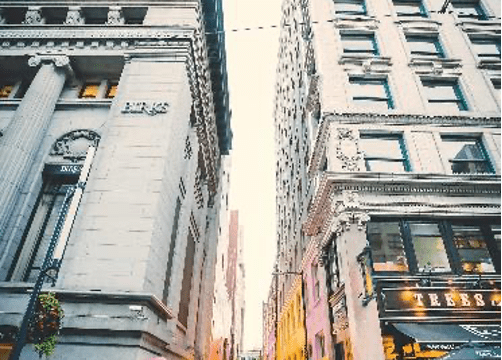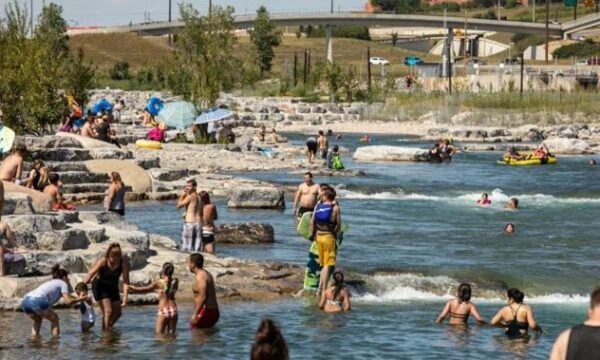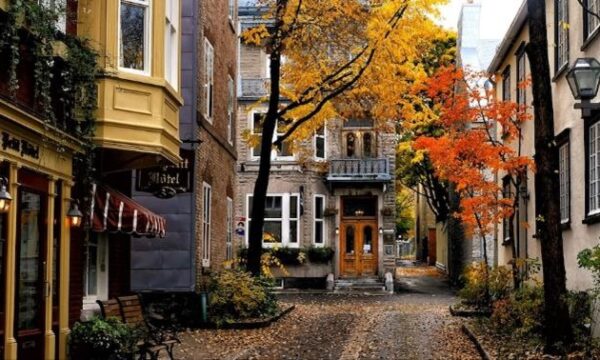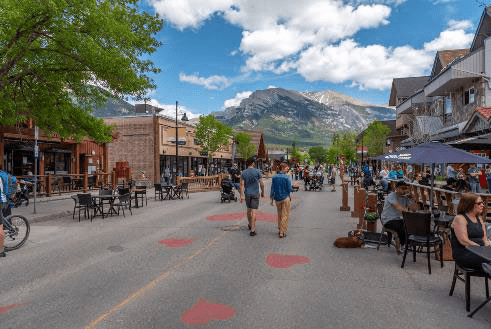Canmore, Alberta
“I particularly remember visiting Canmore, Alberta where for the majority of the COVID-19 pandemic the main street was closed to vehicles. In Alberta, we are not used to seeing major urban arterials closed to traffic – however this is fairly common in European contexts. Seeing the impact of this street closure was inspiring. The number of pedestrians and cyclists occupying the street was much higher than I have ever seen before in Canmore, simply because there was sufficient space for the public to move and interact with the built environment. This relates to the previous question discussing what a positive experience should offer – however this does not simply imply that we should close all urban streets.
The pilot project demonstrated that more public realm could bring more people and activity to the downtown core. If street parking is maintained, and drive-lanes were reduced to 1 or 2 lanes, you would be offered up 2-3 lanes of vehicular traffic that could be dedicated to pedestrian or cyclist use, which brings people downtown. These active modes of transportation allow people to stop and window shop or visit local cafes and restaurants. Vehicular traffic does not offer such an ability. So in sum, these proportions of the street can have a significant influence on mental well-being and experiences for the user while also providing economic benefit depending on the context. The reach of how we define quality can then be pushed even further.”( Booklet Positive Lived Experiences of Quality in the Built Environment 2023, p.227)
Photo: Town of Canmore, jewhyte
Google map link: https://goo.gl/maps/KyYrzNaKRG3DfHbF9
Discover similar lived experiences



